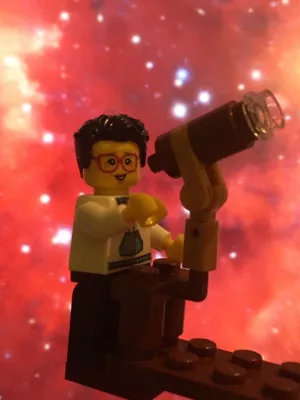
Michal Pawlak
Postdoctoral fellow

Investigating the long secondary period phenomenon with the ASAS-SN and Gaia data
Author
Summary, in English
Aims. The aim of this work is to create a complete list of sources exhibiting a long secondary period (LSP) in the ASAS-SN catalog of variable stars, and analyze the properties of this sample compared to other long period variables without an LSP. Methods. We used the period-amplitude diagram to identify the 55 572 stars showing an LSP, corresponding to 27% of the pulsating red giants in the catalog. We used astrometric data from Gaia DR3 and spectroscopic data provided by the APOGEE, GALAH, and RAVE surveys to investigate the statistical properties of the sample. Results. We find that stars displaying an LSP have a spatial distribution that is more dispersed than that of the non-LSP giants, suggesting that they belong to an older population. Spectroscopically derived ages seem to confirm this. The stars with an LSP also appear to be different in terms of the C/O ratio from their non-LSP counterparts.
Department/s
- Astrophysics
Publishing year
2024-02-01
Language
English
Publication/Series
Astronomy and Astrophysics
Volume
682
Document type
Journal article
Publisher
EDP Sciences
Topic
- Astronomy, Astrophysics and Cosmology
Keywords
- pulsars: general
- stars: AGB and post-AGB
- stars: variables: general
Status
Published
ISBN/ISSN/Other
- ISSN: 0004-6361

